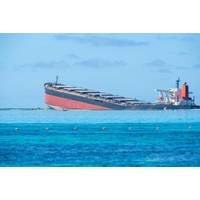
How Coral, Mangroves and Seagrass Could be Affected by the Mauritius Oil Spill
a devastating ripple effect.With that in mind, what does the recent oil spill mean for the environment here?What happens during an oil spill?As soon as oil enters the ocean, lighter compounds in the fuel evaporate and the surrounding air can become toxic to wildlife and even harmful to human health. Oil slicks form on the sea surface and are carried away from the spill site.When reefs and other habitats are nearby, it’s this early window that is most crucial for preventing damage. Containing the spill with booms or collecting the oil while it is on the surface with skimmers can help stop it spreading

Sanchi Oil Spill Puts Coral Reefs at Risk
The list on environmental concerns continues to grow in the aftermath of the Sanchi tanker tragedy. Iranian tanker Sanchi sank in January after colliding with another vessel in the East China Sea, killing all 32 crew aboard and raising concerns about damage to the marine ecosystem. Multiple oil slicks were reported to have come from the ship, which was caring nearly 1 million barrels of condensate, and there are fears that the ship may be leaking heavy fuel oil. Now scientists say water polluted by the Sanchi oil tanker may reach coral reefs in the Ryukyu Island chain, based on the
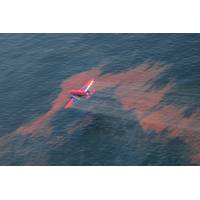
Did Dispersants Help Responders Breathe Easier at Deepwater Horizon?
, 10,000 gallons per day, at the severed wellhead 5,000 feet beneath the ocean surface in the Gulf of Mexico—an unprecedented and unproven experiment. The goal was to break up petroleum that surged uncontrollably from the wellhead into smaller droplets in the deep sea, with the hope of diminishing oil slicks and reducing the amount of harmful gases arriving at the ocean surface. Was this the most opportune response? Seven years later, this decision continues to fuel contentious debate among a wide range of stakeholders, including Gulf beach residents, fishermen, the media, policymakers, NGOs
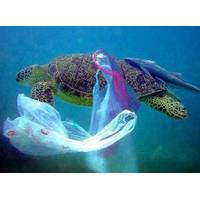
Teledyne Optech Environmental Monitoring In Focus
rapid environmental assessment tool for both natural and man-made disasters Teledyne Optech’s Coastal Zone Mapping and Imaging Lidar (CZMIL) system is a critical rapid environmental assessment tool for monitoring natural and manmade disasters. From detecting sewage pipe leaks, mapping oil slicks and measuring coastline changes after hurricanes, to counting underwater debris in the Great Pacific Garbage Patch, CZMIL identifies and monitors oceanic environmental changes, especially in emergency scenarios. At the Oceans '17 MTS/IEEE conference in Aberdeen, Scotland, Senior Scientist

Sailbuoy Takes Off
are scarce, and near shore regions are particularly important and undersampled. Oil spill monitoring and detection: In situ mapping and tracking of oil concentration in low visibility and poor weather conditions is a significant asset because present remote sensing operations for monitoring of oil slicks are hindered by poor visibility, high sea state and wind conditions Environmental monitoring and water quality: Sailbuoy can be fitted with sensors for water quality measurements, including conductivity, temperature sensor, oxygen optode and a fluorometer. Applications include detection of hydrocarbons
Chariot Oil & Gas Investments & Woodside Sign Agreement
interpreted 2D seismic the Company has identified a large, 149km2 four-way dip faulted Jurassic carbonate structure, JP-1,with a gross mean prospective resource potential of 618mmbbls. The prospect sits adjacent to source rock modelled to be oil generating and is supported by extensive on-block oil slicks, seeps and seismic Direct Hydrocarbon Indicators. An additional material six leads within the Jurassic fairway have also been identified within the block and any success in Prospect JP-1 would therefore offer significant follow-on exploration potential. These prospective resources have been independentl
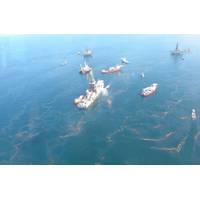
Deepwater Horizon Spill Causes Fish Abnormalities
ocean, fragile fish embryos and larvae are mixed with many other types of plankton, and they usually don’t survive the rough conditions in a net towed near the surface. This made it close to impossible to assess developmental cardiotoxicity in samples collected near the Deepwater Horizon surface oil slicks. To work around this challenge, the international team brought the oil to the fish. Samples of crude oil were collected from the damaged riser pipe and surface skimmers. The samples were then transported to the only land-based hatcheries in the world capable of spawning tunas in captivity. This
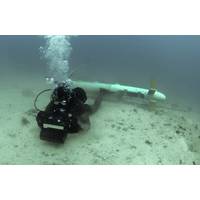
NRL Models Deepwater Horizon Oil Spill
Horizon oil spill. He describes two sets of experiments: one at a local scale, focusing on currents near Louisiana; the second at a mesoscale, looking at the entire Gulf of Mexico. Local scale: predicting where shoreline oil would be worst Using satellite images from May 11, 2010—which show oil slicks still well away from shore—Jolliff forecast how oil would move over the next 96 hours. He predicted oil would make a substantial landfall on the Louisiana coast, west of the Mississippi River Delta, on May 14. "The forecast was qualitatively accurate," he says. "That's precisely


 February 2024
February 2024





